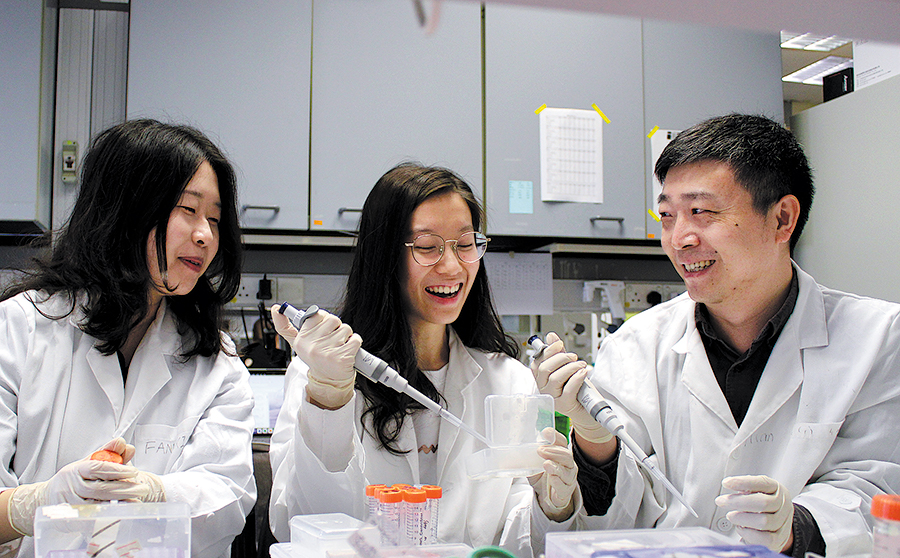Scientist uses high-def tech to delve deeper into DNA
Decades of research into genetic workings aided by latest innovations


Compared to the doctoral program, the postdoctoral program had a higher requirement for research achievements. However, Zhai's research path was still not smooth sailing, and by around 2014, he still hadn't published any research papers.
"Not publishing any papers during the four-year postdoctoral program brings a lot of pressure," he said.
But that all changed thanks to technological innovation. In 2013, the advent of cryo-electron microscopy propelled DNA research to a new level.
Zhai explained that cryo-electron microscopy has a very high resolution, enabling the observation of structures that were previously unseen such as what is at the core of DNA replication — the MCM protein.
DNA is a double-stranded helix that carries genetic information. Within living organisms, DNA needs to be unwound by enzymes, followed by replication, or transcription, to achieve the transmission and expression of genetic traits.
The MCM protein is an enzyme responsible for unwinding the DNA double helix during the DNA replication process, and regulates the initiation of DNA replication.
Zhai said that the instability of the human genome is generally considered a crucial factor in triggering cancer, and the MCM protein, as a DNA helicase at the initiation of DNA replication, regulates genome duplication. Studying the mechanism of the MCM protein is of significant importance for the development of anticancer drugs.
Persistence in his first decade of research led to a windfall in the next. With technological innovation, Zhai soon experienced the "spring" of his research path.
In 2015, one of his papers was published in the international scientific journal Nature, and in 2017, he published two papers in top journals Natural Structural and Molecular Biology, and Molecular Cell, followed by another paper in Nature in 2018. In the same year, he joined the University of Hong Kong as a principal investigator, continuing his research path.
"I dare not say that I am very capable, but as long as I persist, I can seize opportunities when they arise," he said.
On March 6, Zhai and his team published their latest findings in Nature. It was the first time internationally that high-resolution details of the recycling process of parental histones within the framework of DNA replication had been demonstrated.
"Today, our research capabilities in the field of DNA replication are at the forefront of the world," Zhai said.
When asked about what advancements he expects in the future, he said: "Now, with technological innovation, the threshold for structural biology is not as high as before. I look forward to more people being able to conduct the best scientific research, driving the progress of science and fostering the prosperous development of the entire scientific research ecosystem."
Yan Zhongqian contributed to this story.
yandongjie@chinadaily.com.cn
























